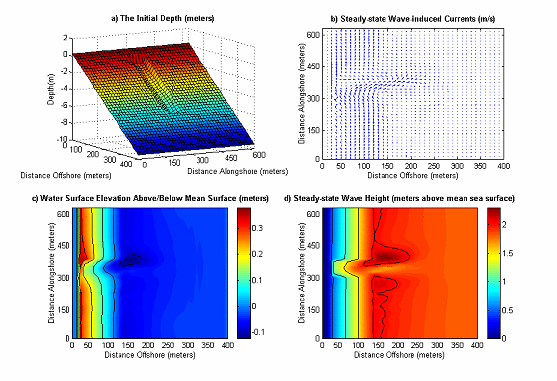| Modelling of Near Shore Evolution and Sediment Dynamics | |
| Up to sixty-six percent of the world’s population inhabit the coastal fringe of the world’s landmass. It is no wonder then that in recent years much concern has accompanied the stories of accelerating sea-level rise and its potential physical and social consequences. With a best estimate of a 50cm rise in sea level by 2100, it is clear that this issue demands great attention. The consequences of such an increase are not well understood and it was not until recently that the investigation of long-term, large-scale coastal evolution was deemed necessary, contrary to the growing trend of small-scale research. Understanding how the coastal system has responded to environmental forcing over the long-term during the past is essential for predicting possible future scenarios. The coastal system can be modelled by a set of partial differential equations that represent the highly complex, non-linear relationships of those physical components comprising the coastal zone. They allow the environmental forcing to be varied (e.g. the wind and wave climate), so that the sensitivity between components in the coastal zone can be identified. These insights can be projected forward in time to provide a more complete understanding of coastal behaviour in the future. Preliminary results using an explicit finite-difference scheme
with periodic boundary conditions are shown below. A uniform beach
with a transverse trough, Figure a), and an offshore wave height
of 2m at an angle of 210o are used as input. Figure b) shows the
wave-induced current velocities with a clear rip current and distinctive
eddies. Horizontal mixing has shifted the rip in the longshore
direction. Figure c) shows the water surface displacement (indicating
zones of set-down and set-up) and Figure d) displays the shoaling
wave height. Such current patterns are significant in the long-term
evolution of the coast. They are forced by stochastic phenomena
(e.g. waves and wind), so Monte Carlo techniques that simulate
these features probabilistically are preferable. This work is
in collaboration with the geography
department. |
|
Results from wave model |
|
| People List Matthew Cole |
|
Slide Shows
|
|
PAST RESEARCH |
|



